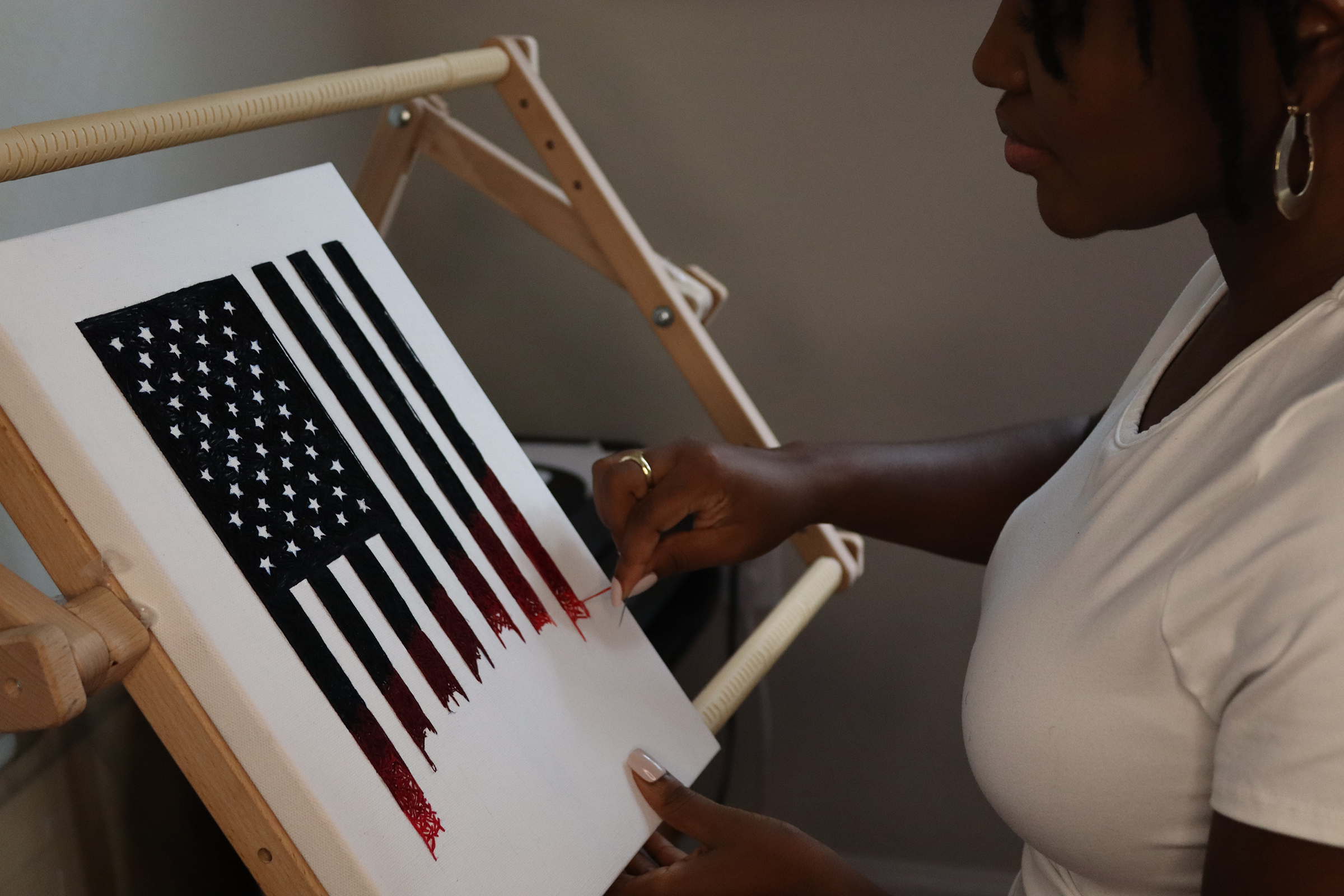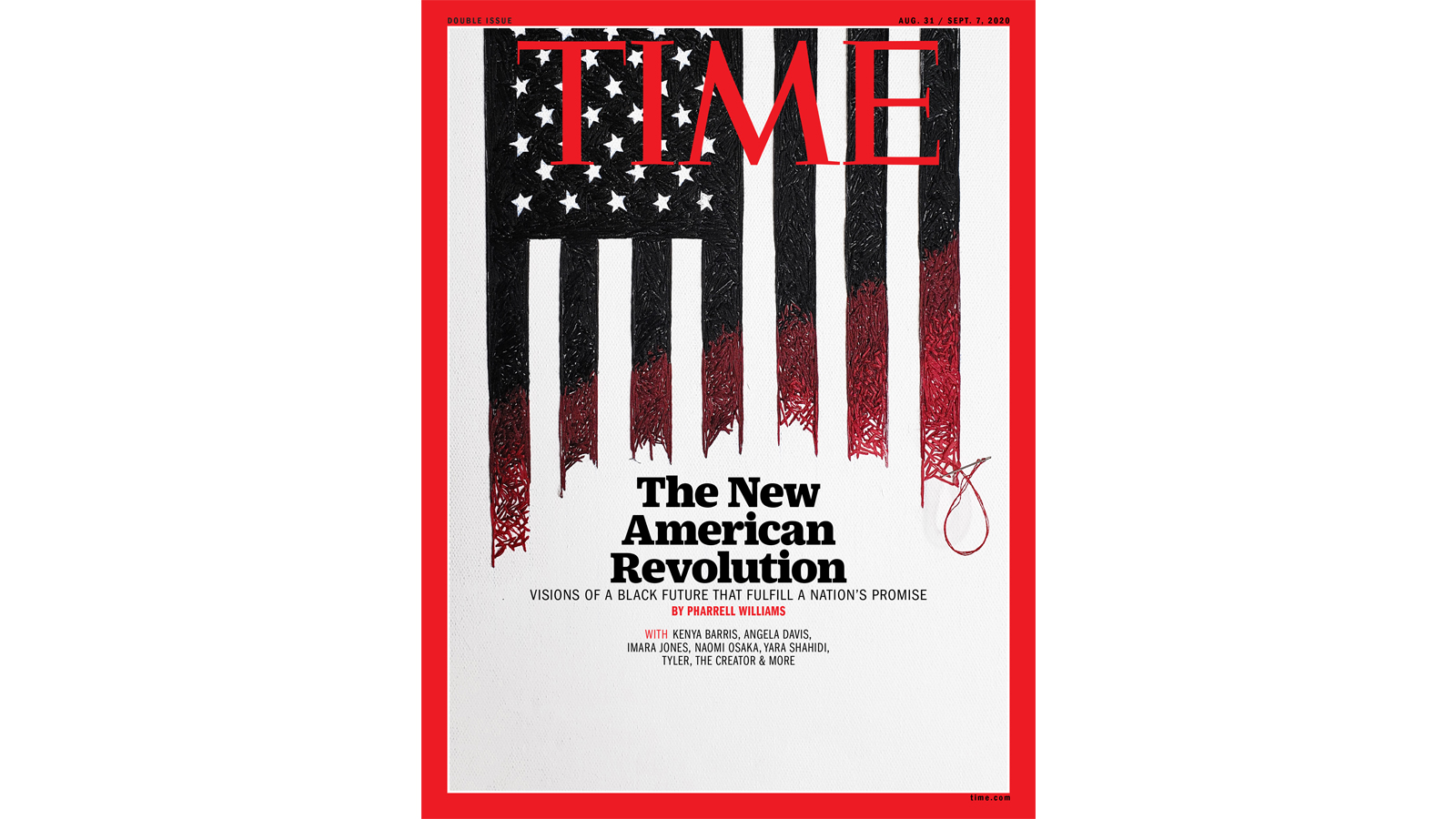At a time when many Americans are asking whether the United States is living up to its more than 244-year-old promise, this week’s TIME cover takes another look at one of the nation’s most powerful symbols.
To accompany a series of conversations and essays about creating a more equitable future for Black Americans, curated by recording artist and producer Pharrell Williams for the Aug. 31-Sep. 7 issue, TIME international art director Victor Williams invited Nneka Jones, a 23-year-old artist whose photo-realistic painting of George Floyd caught his eye on Instagram, to create her first TIME cover: an American flag image that speaks to where the country is now.
Jones, who works in embroidery on canvas, created the artwork featured on the cover by stenciling the outline of the black stripes onto the canvas, and hand-embroidering them with black thread. The white stripes in between are raw canvas. Similarly, the stars are the white of the canvas and she hand-embroidered the black around the stars.
“Every time she pushes the needle through the canvas, it’s an act of intention that mirrors the marching, the protests, the push to form a more perfect union,” TIME’s Williams says. “It’s deliberate. It’s painstaking. It’s long. It’s hard. Each one of those stitches is a single person’s story, a single person’s travails. That’s why we wanted to make the stitches visible.” (Jones can attest to the hard part; her fingers got torn up and sore from sewing this portrait in about 24 hours to meet the magazine’s deadline; such pieces usually take a week to a month to produce.)

There are multiple ways to view the significance of the ombre effect.
To Victor Williams, the image of a black-and-white American flag fading into color reflects the fact that moving toward “a brighter future” is ongoing work. “The narrative of American equity and justice we tell the world and tell ourselves is not entirely true. Black people and people of color know there isn’t liberty and justice for all,” he says. “That’s part of our lived experience. It’s not something we have to think about. It’s not any sort of cognitive exercise. This is life.”
Jones says the flag can also be viewed from the bottom up, to reflect Black Americans “rising up to top positions, looking up to a very optimistic future.”
The artist herself came from Trinidad and Tobago to the U.S. to get a BFA, and graduated from the University of Tampa in May, into a new chapter of American history. This year’s wave of Black Lives Matter protests further confirmed her identity as a self-described “activist-artist,” dedicated to documenting injustices in society and individuals on the margins.
“It’s up to you to decide how you’re going to contribute to society, if you’re going to contribute in a positive or negative way,” she says. The visible stitches on the flag show are a reminder that it takes many small steps to shape a future—and as such, she says, the image holds a question for us all: “How are you shaping that?”
- L.A. Fires Show Reality of 1.5°C of Warming
- Home Losses From L.A. Fires Hasten ‘An Uninsurable Future’
- The Women Refusing to Participate in Trump’s Economy
- Bad Bunny On Heartbreak and New Album
- How to Dress Warmly for Cold Weather
- We’re Lucky to Have Been Alive in the Age of David Lynch
- The Motivational Trick That Makes You Exercise Harder
- Column: No One Won The War in Gaza
